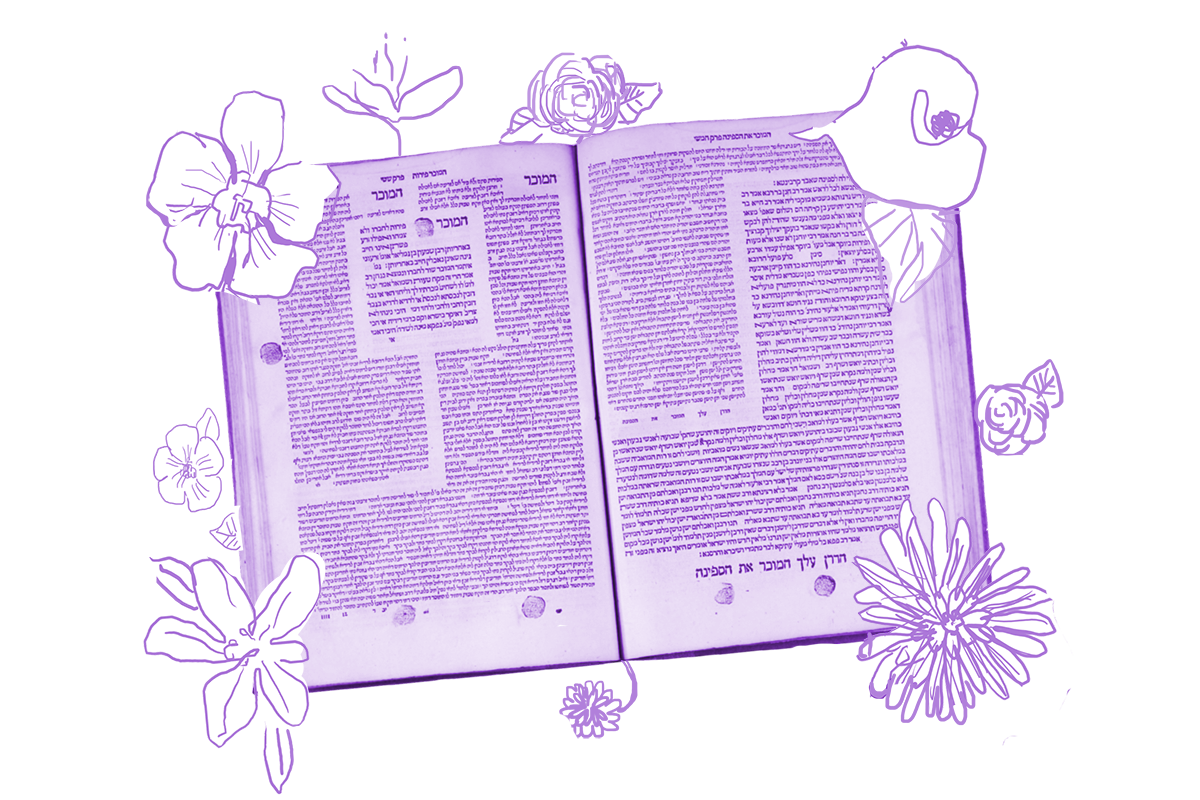According to family legend, we’re descended from Zelig Zeides, the chief mathematician of Slutsk. My great-aunt Essie used to brag, with a lot of pride and a little less credibility, that Grandpa Zelig invented the perpetual calendar and bequeathed to all of us a deep appreciation of and a natural talent for all that is math. Our daf for the day is a fun one for math lovers, with a particular focus on geometry.
Yesterday’s daf launched a conversation that spills over onto today’s page: What’s the minimum acceptable size for a round sukkah? Rabbi Yohanan says that a circular sukkah needs to be 24 cubits in circumference to be kosher. The Gemara wonders why he believes this to be so. Break out your protractors and compasses, folks, because we’re gonna figure this out.
It is assumed that Rabbi Yohanan bases his reasoning on the largest minimum size the rabbis can agree on for a square sukkah: four cubits by four cubits. But are we to understand that the circular sukkah should be inscribed within the minimal square sukkah? Or is the square inscribed within the circle? Or does the circular sukkah just have to have the same floor space (i.e. area) as the square one? The illustrations below help us roughly visualize the three possibilities:

The problem is that it quickly becomes clear that regardless of which of these models one picks, Rabbi Yohanan’s circular sukkah with a 24-cubit circumference is demonstrably larger than the minimum square sukkah that is four cubits on each side. The Gemara tries to explain this, and never quite succeeds. Here is where the conversation on this subject lands:
With your help, My Jewish Learning can provide endless opportunities for learning, connection and discovery.
The sages of Caesarea, and some say that it was the judges of Caesarea, said that Rabbi Yohanan’s statement could be explained using a different calculation: The circumference of a circle inscribed in a square is one-quarter less than the perimeter of the square, while the perimeter of a square circumscribed by a circle is smaller than the circumference of that circle by half (i.e., if one adds half the perimeter of the square to the perimeter of the square, that is equal to the circumference of its circumscribing circle). Therefore, a circle with a circumference of 24 cubits would circumscribe a square with a perimeter of 16 cubits, as prescribed by Rabbi Yohanan.
The sages note here that if a square circumscribes a circle, it’s perimeter is about 25% larger than that of the circle. So if we put Rabbi Yohanan’s 24-cubit circle inside a square, that square should have a perimeter of close to 30 cubits — obviously well above the minimum size of 16 cubits.
But if we put his 24-cubit circle around a square, the circle should have a circumference about 50% larger than the perimeter of the square — meaning the square has a perimeter of 16 cubits. Bingo!
Actually, just kidding. We told you to keep your tools handy, right? It seems the sages of Caesarea were not that good at math — or that something is garbled in this teaching. If a circle circumscribes a square, its circumference is only about 10% larger than the perimeter of the square — not 50%. The Gemara points out this mistake:
And that is not the case, as we see that the circumference of the circumscribing circle is not that much. The actual circumference (of a circle placed around a 4×4 square) is closer to 17 cubits.
This is just a snippet of the conversation. If you read this discussion in full, you sense, even in translation, that the vocabulary of the rabbis, which is fine-tuned for legal argument, is not as well-suited for this kind of mathematical discussion. And their sense of mathematics seems rudimentary as well. For instance, they say that pi has a value of three, and the square root of two is 1.4. These are not terrible approximations, but both these numbers are actually irrational values with infinitely long decimal expansions. Did the rabbis know that? The ancient Greeks certainly did. But with the rabbis, it’s not entirely clear. Still, they understood enough geometry to make clear arguments comparing round and square-shaped sukkot — at least, most of them. Sorry, Caesarea.
Read all of Sukkah 8 on Sefaria.
This piece originally appeared in a My Jewish Learning Daf Yomi email newsletter sent on July 15th, 2021. If you are interested in receiving the newsletter, sign up here.



